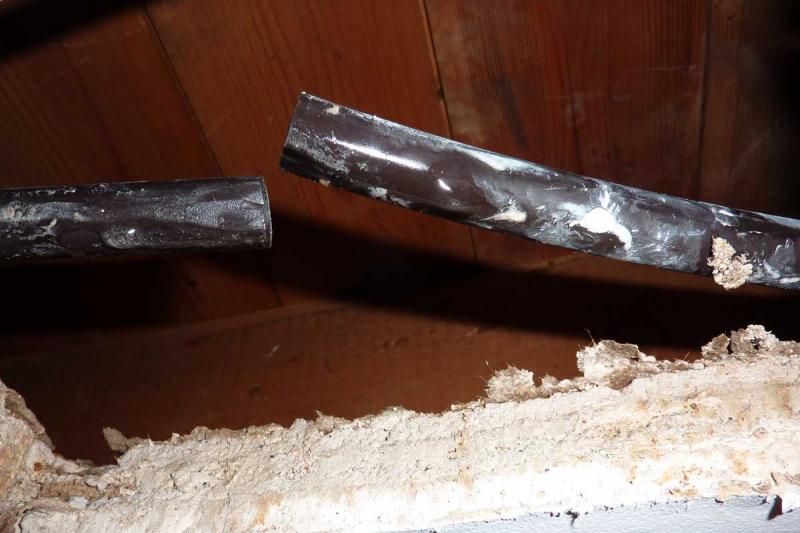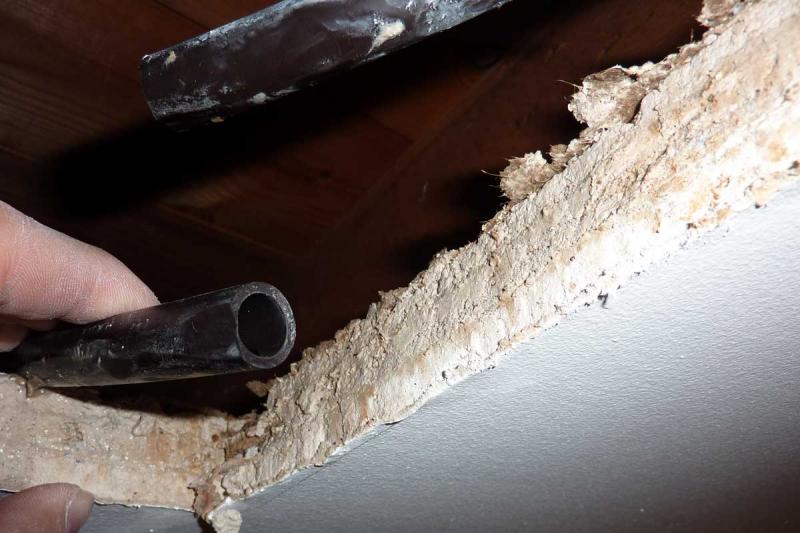We have found one brown coloured pipe made out of rubber which in essence look like a thick rubber hose at circa 15mm (although it is likely to be imperial) carrying hot water to a bathroom on the other side of the house. I would guess the pipe was installed some 20 years+ ago and is possibly a very old version of the modern day barrier pipe (?).
This morning, it burst. No fittings in the vicinity, just the pipe burst at the side.
We have located the burst and cut the pipe in half to see what on earth it is made out of (as above).
What joint fitting can be used to repair this old pipe? (And is it advisable to replace it with barrier pipe sometime down the line?)
This morning, it burst. No fittings in the vicinity, just the pipe burst at the side.
We have located the burst and cut the pipe in half to see what on earth it is made out of (as above).
What joint fitting can be used to repair this old pipe? (And is it advisable to replace it with barrier pipe sometime down the line?)



